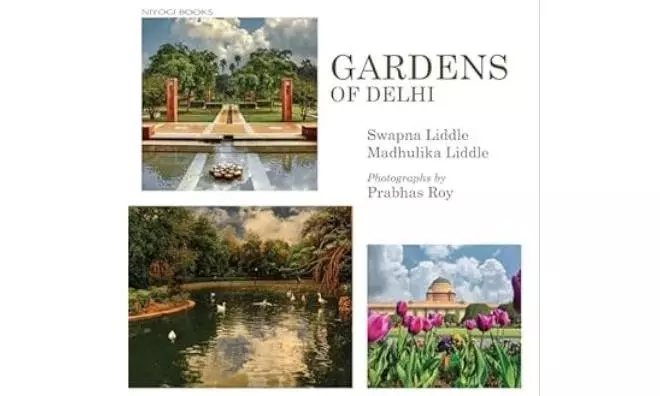Book Review | Gardens are a way of life in Delhi

Originally a ‘semi-desert’, the history of Delhi can be traced through its gardens. The very first trees planted here were likely by the inhabitants of Late Harappan villages Mandoli and Bhorgarh of what is now known as the Indus-Saraswati civilisation around their own homes. Dating back to 2000-1000 BCE, these settlements overlap with Purana Qila and Indraprastha where the Pandavas, too, constructed a city. Perhaps apocryphally, the Mahabharata says it was surrounded by gardens of bakul, gaub persimmon, cannonball or nagchampa and amaltas. Later settlements included successive capital cities of Lal Kot (of King Prithviraj Chauhan), Kilugarhi (Jalaluddin Khilji), Siri (Alauddin Khilji), Tughlaqabad and Jahanpanah (Mohammed bin Tughlaq), Firozabad (Firoz Shah Tughlaq), Dinpanah (Humayun), Sher Garh (Sher Shah Suri), Shahjahanabad (Emperor Shah Jahan), and finally New Delhi. Accurately captured by Prabhas Roy through his evocative lens, this elegant treatise by the historian Swapna Liddle and her novelist sister Madhulika contemplates the various flora of this region. In the process it gives the lie to the oft-repeated contention that Delhi is the greenest capital of the world.
Delhi, however, has a respectable 23 per cent green cover and some 1.8 lakh trees, as of 2017. Yet far too many species among these are unsuitable for its ecology. Others like vilayati keekar (American mesquite) are a little too well-accepted. It has driven endemic species such as salai, pisangan, kaala siris and kulu to near-obliteration. Curiously so, because vilayati keekar was introduced from outside by horticulturists P.H. Clutterbuck and W.R. Mustoe in 1914 even if it covers 98 per cent of the Central Ridge today. The true Delhi forest of pre-New Delhi days here is too scant to be even recognisably the same forest.
The book takes us on a tour of many of the prominent gardens of Delhi, Lodi Garden, Hayat Baksh Bagh, Roshanara Bagh, Shalimar Bagh, Mehrauli, Talkatora Garden and Qudsia Bagh, the last two being planted, respectively, by the Mughal emperor Mohammed Shah and his wife. Newer hotspots like Sunder Nursery, Mughal Garden, National Rose Garden, The Garden of Five Senses and others are also not forgotten. The cultural importance of gardens in the lives of the Mughals and residents of Old Delhi is mentioned in due course. Though never too diverse in terms of local aesthetic (not hard to fathom from the uniformly bland spider lily borders of Lutyens’ Delhi’s thoroughfares), Mehrauli actually has its own flower festival, the three-day Phoolwalon Ki Sair where large floral fans are borne to a Yogmaya temple and the dargah of Sufi saint Khwaja Bakhtiyar Kaki.
A few of Delhi’s green areas are today besieged by problems: The Aravali Biodiversity Park is threatened by a six-lane highway project, and the DDA razed and then allotted land for the rebuilding of the Guru Ravi Dass shrine inside Jahanpanah City Forest. These are kept outside the scope of this work.
Gardens of Delhi
Swapna Liddle and Madhulika Liddle
Niyogi Pubishers
